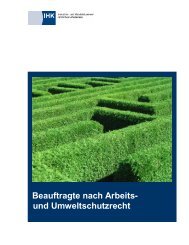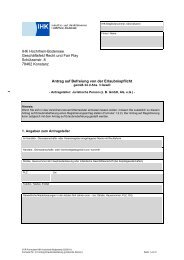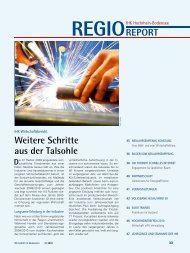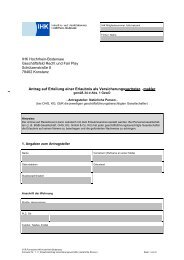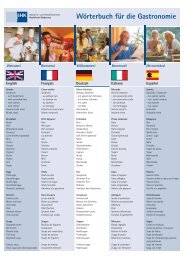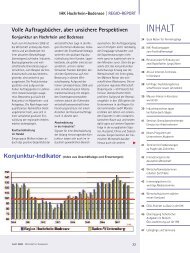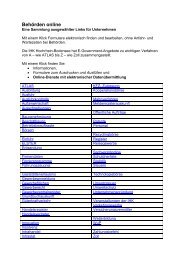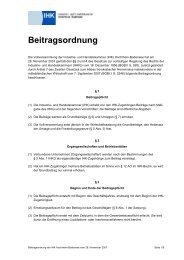REACH_One EINECs One SIEF_Final_clean
REACH_One EINECs One SIEF_Final_clean
REACH_One EINECs One SIEF_Final_clean
Create successful ePaper yourself
Turn your PDF publications into a flip-book with our unique Google optimized e-Paper software.
1. The reference to EINECS in Article 3(20) <strong>REACH</strong> is relevant in the context of the<br />
specific definition of “phase-in substance”, which, in turn, has relevance for the<br />
transitional provisions in <strong>REACH</strong> applicable for phase-in substances. The EINECS<br />
listing is thus relevant for legally determining the phase-in status of a substance and<br />
the ensuing registration deadline, as all substances covered by an EINECS entry<br />
qualify as phase-in substances.<br />
2. EINECS in the vast majority of entries lists one substance and only in certain cases<br />
cover more than one substance. EINECS therefore assists the vast majority of<br />
registrants to efficiently identify their substance and to work with others to determine<br />
if they in fact manufacture or import the same substance.<br />
2.2. The Guidance<br />
The substance definition and the identification rules are further explained in the Guidance for<br />
identification and naming of substances under <strong>REACH</strong> 1 and the Guidance on data sharing 2 .<br />
These guidance documents constitute main interpretative instruments which should be taken<br />
into account in decisions on substance identity and <strong>SIEF</strong> formation. These documents were<br />
initially developed by the Commission in close cooperation with Member States and industry<br />
stakeholders and eventually endorsed by the working group comprising competent authorities<br />
of all Member States, representative number of industry associations and NGO’s. As these<br />
documents have been used as a basis for the work of <strong>SIEF</strong>s so far, any change in<br />
interpretation would likely lead to confusion and the need to revert some of the co-operation<br />
already established. The main references in the guidance to the status of EINECS in relation<br />
to substance identification and data sharing are recalled in Annex II.<br />
3. Practical consequences and need for further work<br />
3.1. Cross-relationship between substances, <strong>SIEF</strong>s and data sharing obligations and<br />
their relationship to EINECS numbers<br />
Most <strong>REACH</strong> obligations apply to substances as defined in Article 3(1). <strong>REACH</strong> starts from<br />
the assumption that registrants are aware of this definition and correctly apply it (using the<br />
identification parameters set out in section 2 of Annex VI). <strong>REACH</strong> does not provide further<br />
mechanisms to determine substance identity. Failure to correctly identify substance identity<br />
affects the basis for data sharing within <strong>SIEF</strong>s and may result in preparation and submission<br />
of incomplete registration dossiers. This may violate a number of <strong>REACH</strong> provisions, which<br />
are described in more detail below.<br />
In practice, determining substance identity often is far from straightforward and for these<br />
reasons, guidance has been elaborated on the criteria to be applied and recommending a<br />
number of steps to companies to agree on substance identity within pre-<strong>SIEF</strong>s, as a basis for<br />
data sharing. This may in certain cases lead to splitting EINECS entries into several distinct<br />
substances. As <strong>REACH</strong> foresees one <strong>SIEF</strong> per substance, this means that the pre-<strong>SIEF</strong> is split<br />
into several <strong>SIEF</strong>s.<br />
1 http://guidance.echa.europa.eu/docs/guidance_document/substance_id_en.pdf<br />
2 http://guidance.echa.europa.eu/docs/guidance_document/data_sharing_en.pdf<br />
4



